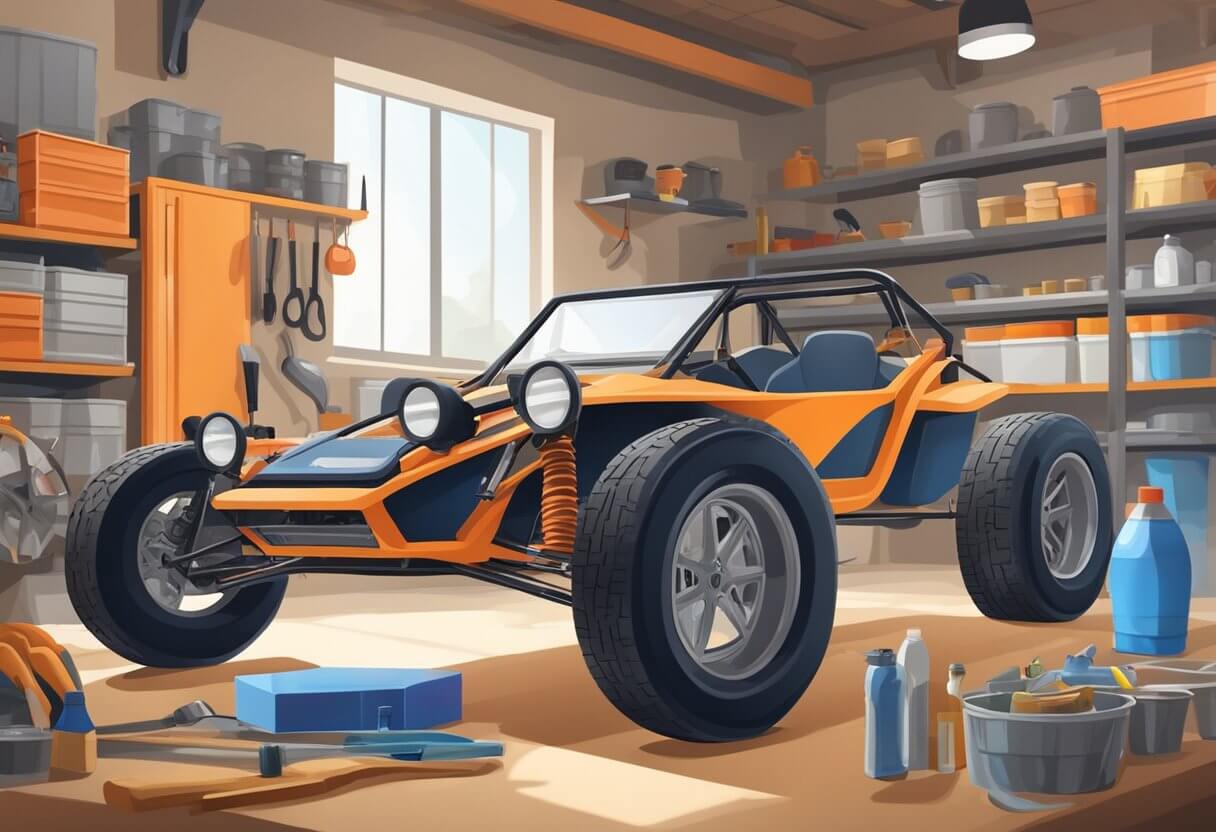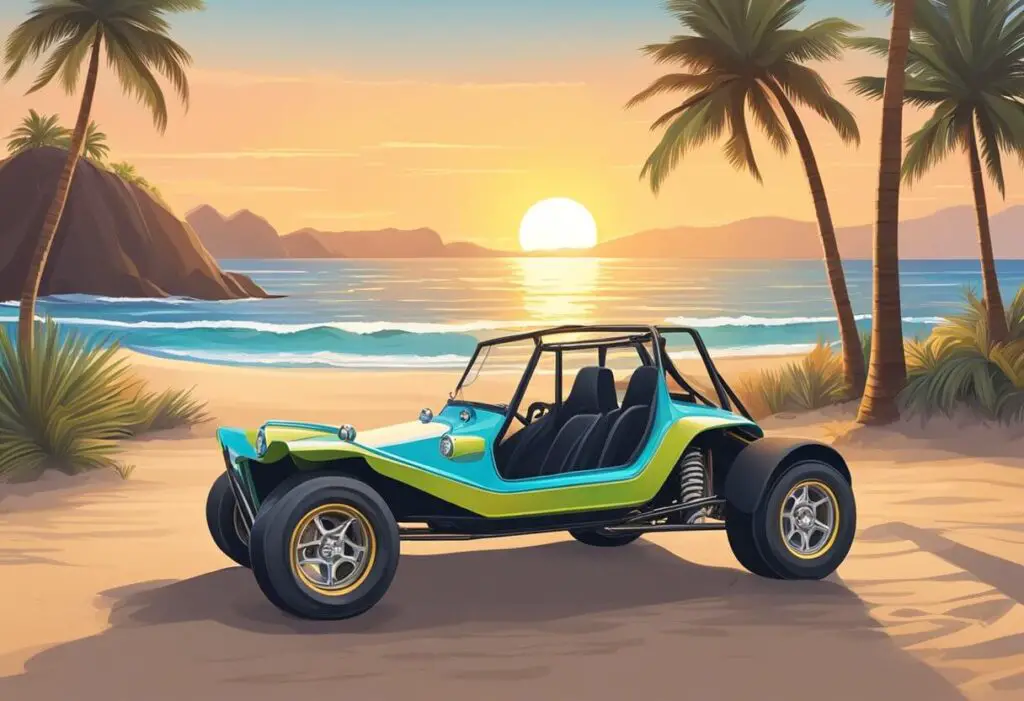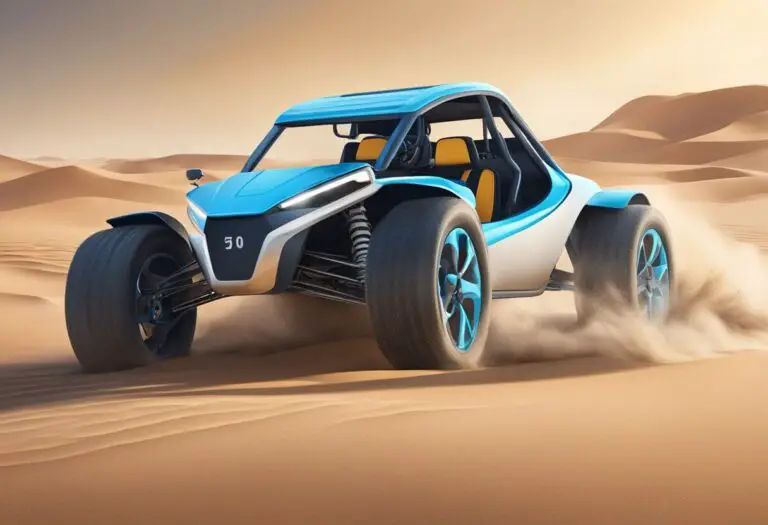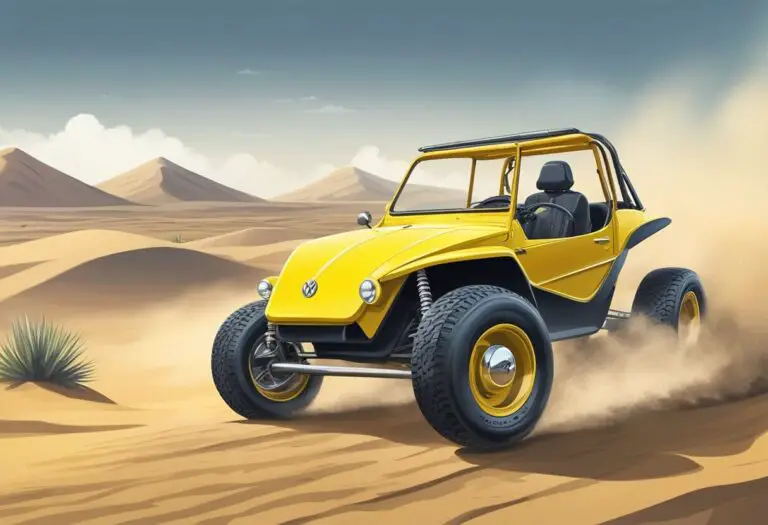Dune Buggy Kit Car: Build Your Own Off-Road Adventure

Dune buggies are a type of off-road vehicle that originated in Southern California in the 1960s. They were initially built using stripped-down Volkswagen Beetles, but over time, manufacturers began producing kits that could be used to build custom dune buggies. Today, dune buggy kit cars are a popular option for those who want to create their own unique off-road vehicle.
There are many different types of dune buggy kit cars available, each with its own set of features and capabilities. Some are designed for speed and performance, while others are geared towards off-road adventures. No matter what type of dune buggy kit car you choose, building your own vehicle can be a fun and rewarding experience.
Key Takeaways:
- Dune buggies are a type of off-road vehicle that originated in Southern California in the 1960s.
- Dune buggy kit cars are a popular option for those who want to create their own unique off-road vehicle.
- There are many different types of dune buggy kit cars available, each with its own set of features and capabilities.
History of Dune Buggy Kit Cars

Dune buggies have a unique and interesting history that dates back to the 1950s. The first dune buggy kit car was created by Joe Vittone, the owner of a Volkswagen factory. Vittone began rolling out “buggy kits” that gave users the freedom to make their own dune buggy. The cars created from the kit used mostly sheet metal and were named “Sportster.” This was somewhere around the 1960s.
Over time, the dune buggy kit car became more popular, and more manufacturers began producing them. One of the most popular dune buggy kit cars was the Meyers Manx. The Meyers Manx dune buggy was designed initially for desert racing by Californian engineer, artist, boat builder, and surfer Bruce F. Meyers. It was produced by his Fountain Valley, California company, B. F. Meyers & Co. from 1964 to 1971, in the form of car kits applied to shortened chassis of Volkswagen Beetles.
Other notable dune buggy kit car manufacturers include the Dearborn Automobile Company (later known as Autodynamics Corporation), which was in business during the prime years of dune-buggy history: 1968-74. DAC laid up a lightweight fiberglass body and designed it to fit a short VW floorpan and running gear. The Deserter was available in two kit-car configurations: the S1 and the GT.
Today, dune buggy kit cars remain popular among car enthusiasts. The Meyers Manx, in particular, remains a favorite among those who love the classic dune buggy look. However, there are also many other options available, including modern designs that incorporate the latest technology and materials.
Types of Dune Buggy Kit Cars

Dune buggies come in various types that cater to different driving needs. Here are the two main types of dune buggy kit cars:
Street Legal Kits
Street legal dune buggies are designed for driving on paved roads and highways. These buggies typically have a low center of gravity, making them stable and easy to handle on the road. They also feature safety features such as seat belts, lights, and turn signals.
One popular street legal dune buggy kit car is the Meyers Manx. This classic buggy has a fiberglass body and a Volkswagen engine. The Manx is known for its sleek design and excellent handling on the road. It is also available in an electric version, the Manx 2.0 Electric Vehicle.
Off-Road Kits
Off-road dune buggies are designed for driving on rough terrain such as sand dunes and dirt roads. These buggies typically have a high ground clearance and large tires to handle the rough terrain. They also feature heavy-duty suspension systems to absorb shocks and bumps.
One popular off-road dune buggy kit car is the Sand Rail. This buggy has a tubular frame and a powerful engine that can handle any terrain. The Sand Rail is known for its durability and off-road capabilities.
When choosing a dune buggy kit car, it is important to consider your driving needs. If you plan on driving on the road, a street legal kit is the way to go. If you plan on off-road driving, an off-road kit is the better option.
Components of a Dune Buggy Kit
When it comes to building a dune buggy kit car, there are several components that are essential to the process. These components include the chassis, engine, suspension, body panels, and safety features. Below is a breakdown of each component and its importance in the overall construction of a dune buggy.
Chassis
The chassis is the foundation of the dune buggy and serves as the backbone of the vehicle. It is responsible for supporting the weight of the vehicle and its occupants, as well as providing a mounting point for the engine, suspension, and body panels. The chassis is typically made of steel or aluminum and is designed to be lightweight and strong.
Engine
The engine is the heart of the dune buggy and is responsible for providing the power needed to propel the vehicle forward. The engine can be either air-cooled or water-cooled and can range in size from a small four-cylinder to a large V8. The engine is typically mounted in the rear of the vehicle and is connected to the transmission via a drive shaft.
Suspension
The suspension is responsible for absorbing bumps and shocks in the road and providing a smooth ride for the occupants of the dune buggy. The suspension can be either independent or solid axle and can be adjusted to suit the needs of the driver. The suspension is typically made up of shocks, springs, and control arms.
Body Panels
The body panels are the outer shell of the dune buggy and are responsible for providing protection from the elements as well as giving the vehicle its unique style. The body panels can be made of fiberglass, aluminum, or steel and can be customized to suit the needs of the driver.
Safety Features
Safety features are an important component of any vehicle, and the dune buggy is no exception. Safety features can include seat belts, roll bars, and reinforced frames. These features are designed to protect the occupants of the vehicle in the event of an accident or rollover.
In conclusion, each component of a dune buggy kit is essential to the overall construction of the vehicle. From the chassis to the safety features, each component plays a crucial role in ensuring that the dune buggy is safe, reliable, and fun to drive.
Building Your Dune Buggy
Assembly Process
Building a dune buggy from a kit can be a rewarding and fun experience. The assembly process can vary depending on the kit, but generally involves attaching the frame to the chassis, installing the engine and transmission, and adding the body panels. It is important to carefully follow the instructions provided by the kit manufacturer and take the time to ensure that each step is completed correctly.
Customization Options
One of the advantages of building a dune buggy from a kit is the ability to customize it to your liking. Many kit manufacturers offer a variety of options for body style, color, and accessories. Some even offer the ability to customize the suspension and engine for improved performance. It is important to consider your intended use for the dune buggy when selecting customization options. For example, if you plan to use it primarily for off-road adventures, you may want to opt for a more rugged suspension and larger tires.
Tools and Equipment Needed
Building a dune buggy from a kit requires a variety of tools and equipment. Some of the basic tools needed include wrenches, sockets, pliers, and screwdrivers. It is also important to have access to a lift or jack stands to raise the vehicle off the ground during assembly. In addition, specialized tools such as a torque wrench may be required for certain parts of the assembly process. It is important to carefully review the list of required tools and equipment provided by the kit manufacturer before beginning the assembly process.
Overall, building a dune buggy from a kit can be a fun and rewarding experience for those with a passion for off-road adventures. By carefully following the instructions provided by the kit manufacturer, considering customization options, and having the necessary tools and equipment on hand, you can create a unique and personalized dune buggy that is sure to turn heads on the trails.
Legal Considerations for Kit Cars
When building a dune buggy kit car, it is important to consider the legal requirements for registration, licensing, inspection, and compliance. Failure to comply with these requirements can result in fines, impoundment of the vehicle, or even legal action. In this section, we will discuss the legal considerations for kit cars, including registration and licensing, as well as inspection and compliance.
Registration and Licensing
Before operating a kit car on public roads, it must be registered and licensed with the appropriate authorities. The registration process varies depending on the state or province, but typically involves providing proof of ownership, a bill of sale, and a kit car manufacturer’s certificate of origin. In addition, the kit car must meet the state’s safety and emissions standards.
Inspection and Compliance
Once the kit car is registered and licensed, it must undergo a safety inspection to ensure that it meets the state’s safety standards. The inspection process varies depending on the state, but typically involves checking the brakes, lights, tires, steering, and suspension. In addition, the kit car must comply with the state’s emissions standards.
States have specific regulations for kit cars, like requiring a certain percentage of new parts or prohibiting certain engines. Research your state’s regulations before building to avoid legal issues. Following requirements ensures your dune buggy kit car is legal and safe for public roads.
Maintenance and Upkeep
Maintaining and keeping up with a dune buggy kit car is essential to ensure its optimal performance and longevity. Regular maintenance and upkeep can prevent major issues from occurring and save the owner from costly repairs.
One of the most important aspects of maintenance is checking the oil and changing it regularly. The oil should be checked before every ride and changed every 1,000 miles or as recommended by the manufacturer. It is also important to check the air filter regularly and clean or replace it as necessary to ensure proper air flow and prevent engine damage.
Tire pressure is another critical aspect of maintenance. The owner should check the tire pressure before every ride and adjust it to the recommended level. Low tire pressure can cause handling issues and increase the risk of a blowout.
Regularly inspecting the brakes, suspension, and steering components is also crucial. The owner should check for any signs of wear or damage and replace any worn or damaged parts immediately. Lubricating the moving parts of the suspension and steering system can also help prevent premature wear.
Lastly, keeping the dune buggy clean and dry can help prevent rust and corrosion. The owner should wash the dune buggy regularly and dry it thoroughly to prevent moisture buildup. Covering the dune buggy when not in use can also help protect it from the elements.
In short, regular maintenance and upkeep of a dune buggy kit car is essential for optimal performance and longevity. Checking the oil, air filter, tire pressure, brakes, suspension, and steering components, as well as keeping the dune buggy clean and dry, can help prevent major issues and save the owner from costly repairs.
Dune Buggy Kit Car Communities and Events

Dune buggy kit cars have a passionate following and there are many communities and events dedicated to these unique vehicles. These events are a great way for owners to meet other enthusiasts, show off their cars, and participate in fun activities.
One of the most well-known events for dune buggy kit cars is the annual Manx Club Reunion. This event is organized by the Manx Club, which is a group of Meyers Manx owners and enthusiasts. The reunion is held in various locations across the United States and attracts hundreds of dune buggy owners each year. Participants can enjoy trail rides, car shows, and social events with fellow enthusiasts.
Another popular event is the Buggy Bash, which is held annually in Silver Lake, Michigan. This event is organized by the Great Lakes Dune Buggy Club and is open to all dune buggy owners, regardless of the make or model of their car. Participants can enjoy dune rides, beach parties, and other fun activities.
In addition to these larger events, there are many local dune buggy clubs and groups that organize regular meetups and activities. These groups are a great way for owners to connect with other enthusiasts in their area and participate in local events and activities.
Overall, the dune buggy kit car community is a vibrant and passionate group of enthusiasts who love these unique vehicles. Whether you are a seasoned owner or just getting started, there are many opportunities to connect with other enthusiasts and participate in fun events and activities.




